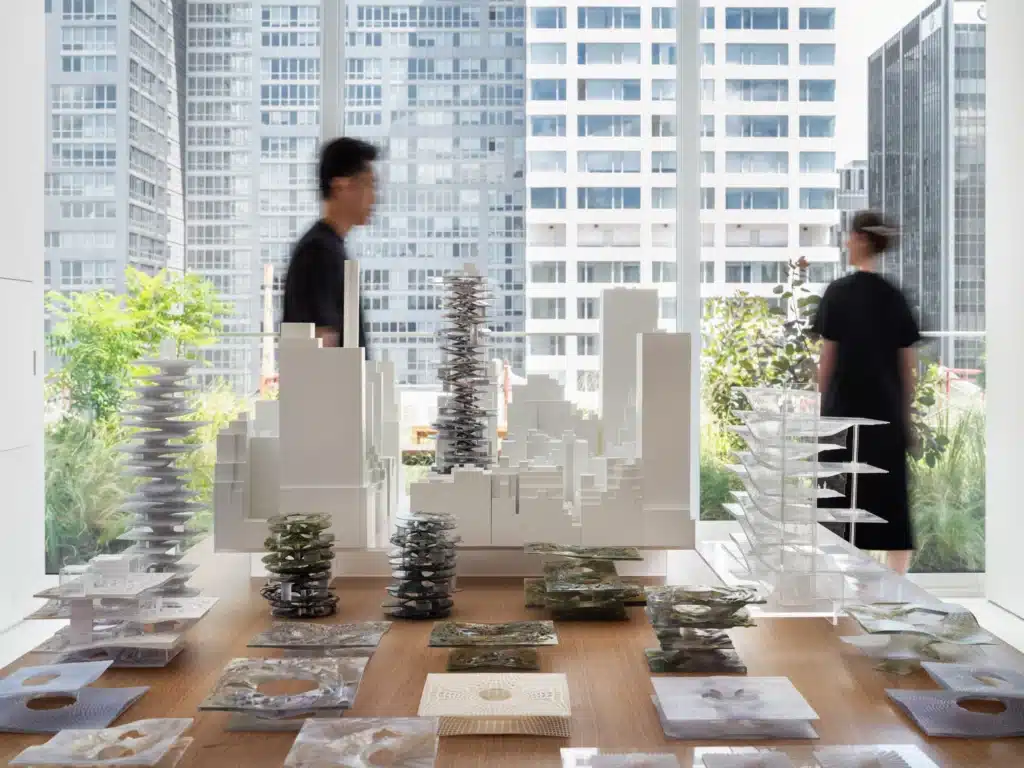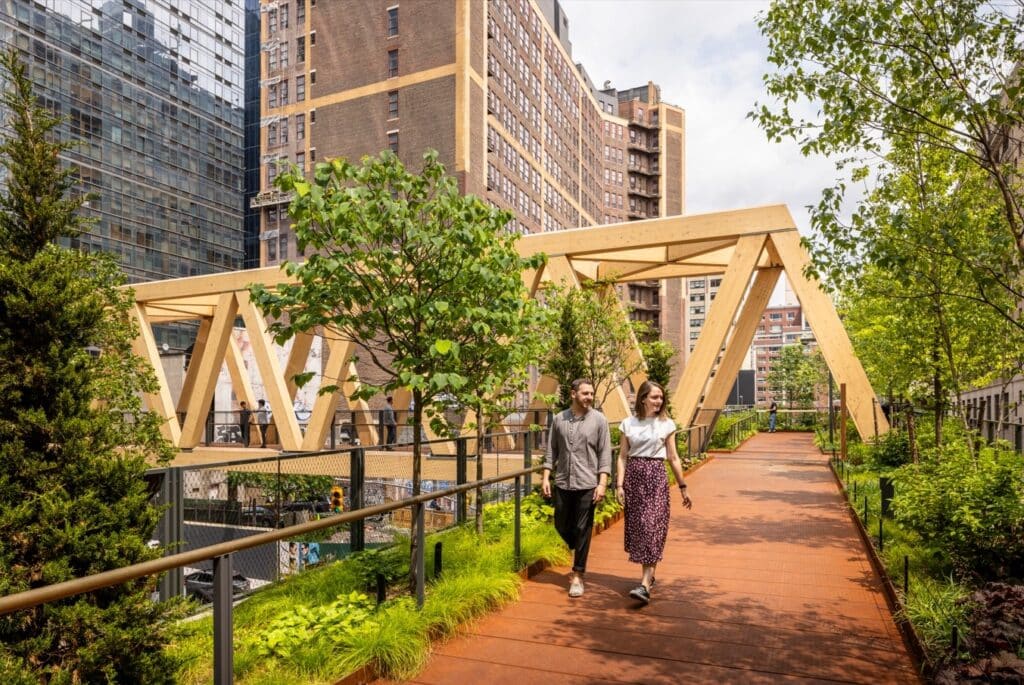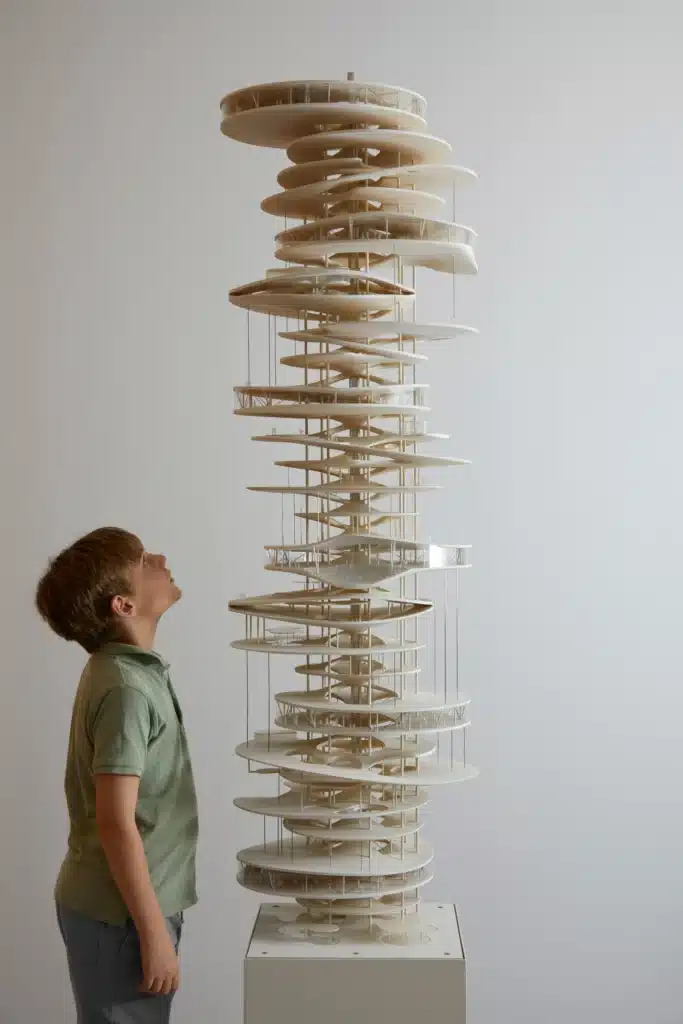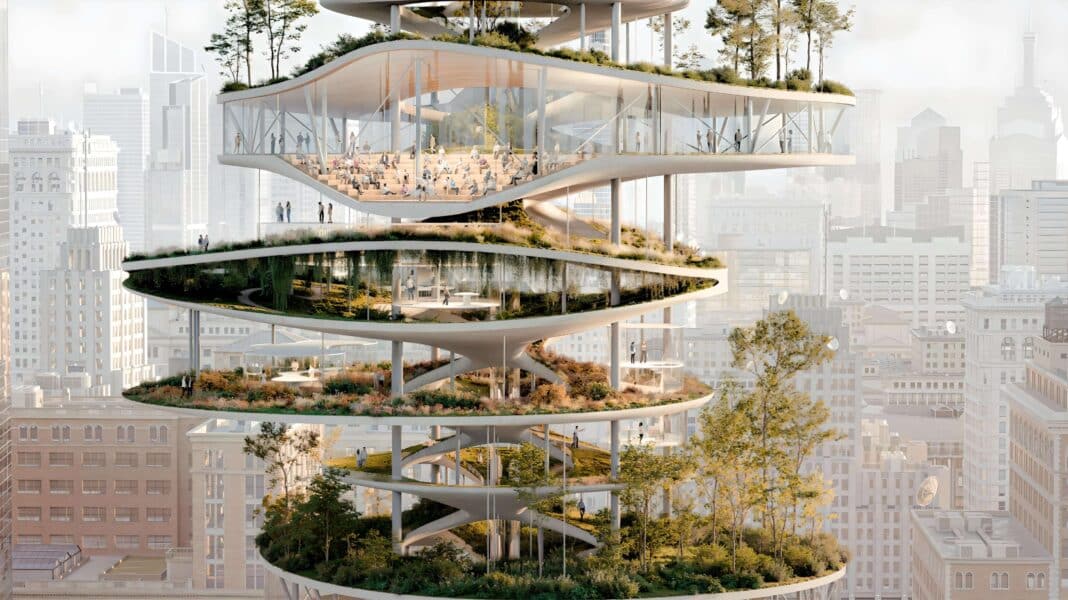Architects are now using AI to design “building forms that increase biodiversity” –it comes as Wood Central last year revealed that architectural practices were now using programmes like Midjoinery to design mixed-use mass timber buildings.
Now, New York-based Oxman Studio has devised a new computer system called “ecological programming” to optimise green architecture, accounting for sunlight, wind, contamination, and other factors to improve city-based ecosystems.
Already, the studio is working with the Goodman Group—Australia’s largest real estate developer—to green up industrial and warehouse sites across Asia-Pacific, continental Europe, the Americas, and the UK.

“We are figuring out how to create master plans, building layouts, and building optimisation that increase biodiversity and resilience and ecological thriving,” said Neri Oxman, an MIT professor in design. “And we have devised a new approach called ecological programming.”
Demonstrating the model in practice, Ms Oxman has revealed plans for ‘Eden Tower,’ an optimistical skyscraper with multiple planted platforms. Renders show a series of stacked circles with a central core supporting some of the levels directly, while others are suspended from columns that ring the edge of the stakes.
Ms Oxman used the High Line—a restored railway track that has now been converted into a linear park—to illustrate how the design system could help drive the uptake of green roofs across major cities:
“Interestingly, a lot of these ideas that come from modern architecture from the industrial period can be now repackaged technologically by lending or looking at tools from artificial intelligence and how they’re how they can be incorporated into contemporary urban design.”

She said the algorithms account for site-specific information—including sun, moisture, and soil conditions—and are also measured against “resource availability” factors and design goals such as air purification.
Currently, Ms Oxman is gathering data to be used in these computational programs through the “capsules” in its on-site wet lab that simulate ecological conditions. According to Nicolas Lee, Oxman’s Head of Ecology is designed to “maximise biodiversity.”
“The capsules provide us with physical data that informs a computational design process at the centre of Eden,” Mr Lee said. “Now, with conventional architectures throughout history, we’ve become good at designing for humans because we can talk to humans. We can understand what they need.”
“Nonhumans are not like that. They don’t speak the same language as us, so we need to develop a data-driven approach to determine the parameters they need to thrive if we want to design for them effectively.”

These inputs are essential in helping shape projects like Eden Tower or remodelling landscapes to increase carbon capture—according to the studio, data centres are a perfect candidate for this.
“We’re not designing the garden, we’re designing the gardener,” Mr Lee said: “We can pick up that system and place it into any arbitrary contaminated environment, and it will implement that strategy optimised over time. This opens the door to generative design systems that can explore their design behaviours and come up with things that we would never be able to think of as designers.”
- To learn more about the push by architects and engineers to use AI technology to design the next generation of buildings, click here for Wood Central’s special feature.






